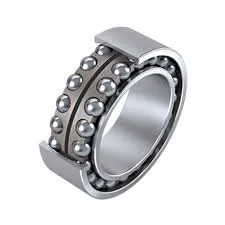
10 月 . 30, 2024 21:35 Back to list
6003 bearing specification
Understanding the 6003 Bearing Specification
The 6003 bearing is a popular type of deep groove ball bearing known for its versatility and reliability in a wide range of applications. This bearing specification is part of a larger family of bearings that are designed to support both radial and axial loads, making them ideal for use in various machinery and equipment. In this article, we will delve into the key features, dimensions, applications, and maintenance considerations integral to the 6003 bearing specification.
Key Features
The 6003 bearing is characterized by its simple design, which consists of an inner ring, an outer ring, a ball bearing retainer, and a series of steel balls. Its deep groove design allows it to accommodate both radial and moderate axial loads in either direction. One of the defining features of the 6003 bearing is its ability to reduce friction during operation, which contributes to a longer lifespan and improved efficiency of the equipment it is used in.
Dimensions
In terms of dimensions, the 6003 bearing has specific measurements that classify it within the deep groove ball bearing line. The standard dimensions of a 6003 bearing are as follows an inner diameter of 17 mm, an outer diameter of 35 mm, and a width of 10 mm. The bearing is designed to accommodate a maximum dynamic load rating of approximately 6,000 N and a static load rating of about 3,000 N. These specifications make the bearing suitable for light to moderate load applications.
6003 bearing specification

Applications
The 6003 bearing is used in a variety of applications across different industries. It is commonly found in electric motors, conveyor systems, fan assemblies, and household appliances. Furthermore, its reliability and ease of installation make it a preferred choice in automotive applications, as well as in agricultural and construction machinery. Its versatility ensures that it can be integrated into both high-speed machinery and slower-moving equipment effectively.
Maintenance Considerations
To ensure the longevity and optimal performance of the 6003 bearing, regular maintenance is crucial. It is advisable to keep the bearing clean and properly lubricated to minimize friction and wear. Depending on the specific application and operating conditions, different lubrication methods can be employed, including oil or grease. Additionally, regular inspections should be conducted to look for signs of wear, such as unusual sounds or vibrations, which may indicate the need for replacement.
Conclusion
In conclusion, the 6003 bearing specification represents a reliable and versatile option for a broad range of applications. Its design facilitates efficient load handling while its dimensions provide compatibility with numerous systems. By understanding its features and proper maintenance requirements, users can maximize the performance and lifespan of the 6003 bearing, making it a valued component in both industrial and domestic settings.
Latest news
-
Unlocking Efficiency with Spherical Roller Bearings
NewsOct.29,2024
-
The Ultimate Guide to Thrust Ball Bearings
NewsOct.29,2024
-
The Power of Thrust Roller Bearings: Engineered for Excellence
NewsOct.29,2024
-
The Power of Deep Groove Ball Bearings for Your Application Needs!
NewsOct.29,2024
-
The Power and Performance of Cylindrical Roller Bearings
NewsOct.29,2024
-
High-Quality Ball Bearing Manufacturing Machines
NewsOct.29,2024
